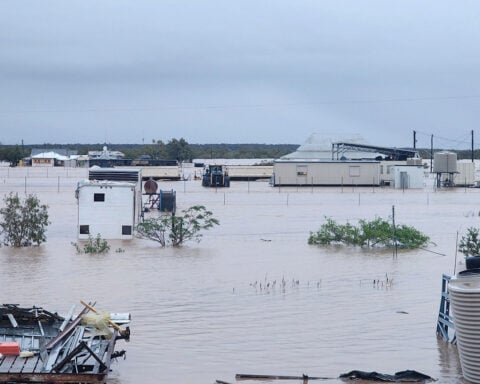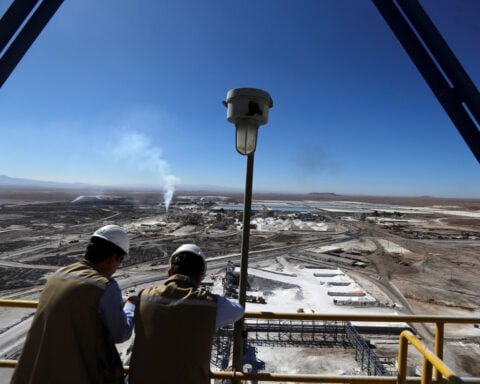Consumers may finally start feeling relief from years of high inflation, but there remains one item that can still induce sticker shock: chocolate. Prices for the popular candy have soared over the last year, and show no signs of coming down.
At the same time, Halloween is just two weeks away, and demand for chocolate is expected to kick into overdrive to meet the needs of trick-or-treaters. Cocoa-based confections such as M&Ms, Reese’s Cups, and Hershey bars consistently rank amongst the most popular sweets for the holiday, according to Candyshop.com.
So, will chocolate-lovers looking for their fix this fall be disappointed? It’s possible. Those who want to keep the sweet in their mix will likely have to pay more at checkout. Still, it won’t be until next year and afterwards when we’ll truly see the results of the problems causing prices to rise. In the long run, we may have to treat chocolate as a rare delicacy, and less like an everyday treat.
What’s causing the spike in chocolate prices?
The cost of cocoa powder, the raw material from which chocolate is made, surged earlier this year to nearly triple its previous level. While prices have come down, the commodity is still more expensive than it was one year ago.
Because cocoa is traded on the futures market, it takes several months for rising prices to affect large confectionery corporations, and then make their way to consumers. Companies make contracts to buy their chocolate well in advance of the time at which they will need it, and then place bets to reduce the risk that sudden price fluctuations will harm them. These manoeuvers can keep the cost to consumers from rising in the short term, but wear off if demand continues to outweigh supply. As a result, last winter’s spike in prices for unprocessed cocoa is only now being felt by consumers.
Cocoa prices, in turn, are being driven up by a combination of a poor harvest and economic realities, which make the crop unattractive to farmers. Climate change has made West Africa – where over 80% of global cocoa is grown – a less fertile area for the cacao tree. Rising temperatures increase evaporation from the soil, but do not lead to more rainfall. Consequently, the rainforests which the trees depend on are drying out. On the other hand, climate change makes occasional torrential rainfalls more likely. Excessive rain this year caused fungal growth on cocoa pods, and made the harvest more difficult.
There have also been long-simmering labor issues in the chocolate industry that have finally reached a boiling point, decreasing the amount of cacao that can be grown. Farmers grow and ferment the beans on their farms, and then sell them to intermediaries who process them and bring them to market. This leaves farmers with low leverage. As a result, they receive just 6.6% of the industry's earnings, leaving them with less than $1.50 per day as of 2021.
Because of this, fewer people are dedicating their labor and land to cacao cultivation. Farmers have begun to rent their plots of land to illegal miners instead of cultivating it. Youths from cacao-growing countries migrate from farms to cities in search of opportunities that are lacking at home. If chocolate-growing continues to be as unprofitable in the future as it has been in the past, it will only be rational for people to leave the trade.
When will prices come down?
Unfortunately, these issues are not expected to go away anytime soon. The effects of climate change on the West African cocoa belt are only becoming more severe. While the cost of raw cacao has declined from its spring high, unfavorable weather conditions – like the ones which occurred this year – are likely to become more frequent in the future.
As for labor issues, it is unlikely they will be resolved without an increase in payments to farmers. While confectionery companies may have to shrink some share of the proceeds, they will try to pass on their higher costs to customers.
Kathryn Sampeck, a professor of sociology and anthropology at Illinois State University who studies cacao producers, told LAPost.com prices may need to remain high in order to ensure fair treatment and stable production.
“My hope is that we've set a new price point, because to be quite honest, cacao and chocolate have been way too cheap for way too long,” she said. Sampeck points to the industry’s long history of coerced and enslaved labor as evidence that not enough money is making it to producers.
Sampeck hopes greater awareness of the conditions in which chocolate is produced will change the way we think about the product, and lead to acceptance of higher prices.
“I think a lot of people care about the quality of what they're consuming, how it's being produced,” she said. “Just having a little bit more transparency will make people appreciate it, and be willing to pay a fair price that would address that issue.”
What does this mean for consumers this Halloween?
Those buying candy for trick-or-treaters this month may find less chocolate than they are accustomed to. Retailers are sidelining cocoa-based treats in favor of other confections such as sours and licorice.
As consumers face higher prices this Halloween, they're also confronted with the realities of the chocolate industry's challenges.
In the long term, chocolate may cede its central place at Halloween celebrations. The Washington Post reports “chocolate is on its way out.”
The future of Halloween candy might look different, but it could also be a step towards a more conscientious and equitable chocolate market.
It’s not known what will happen to our chocolate consumption habits, but one thing is clear: this Halloween, the scariest thing might just be the price tag on that chocolate bar.

 Trump has begun another trade war. Here's a timeline of how we got here
Trump has begun another trade war. Here's a timeline of how we got here
 Canada's leader laments lost friendship with US in town that sheltered stranded Americans after 9/11
Canada's leader laments lost friendship with US in town that sheltered stranded Americans after 9/11
 Chinese EV giant BYD's fourth-quarter profit leaps 73%
Chinese EV giant BYD's fourth-quarter profit leaps 73%
 You're an American in another land? Prepare to talk about the why and how of Trump 2.0
You're an American in another land? Prepare to talk about the why and how of Trump 2.0
 Chalk talk: Star power, top teams and No. 5 seeds headline the women's March Madness Sweet 16
Chalk talk: Star power, top teams and No. 5 seeds headline the women's March Madness Sweet 16
 Purdue returns to Sweet 16 with 76-62 win over McNeese in March Madness
Purdue returns to Sweet 16 with 76-62 win over McNeese in March Madness








